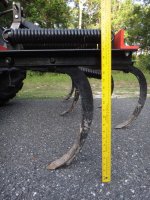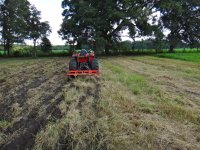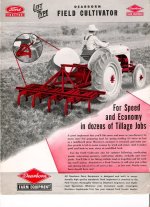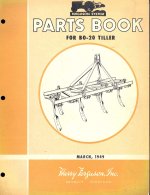Colorado91
New member
Afternoon all,
I have recently acquired a 14 acre block that I will soon be building on. The terrain of the property changes from rolling hills to some steep slopes.
I currently own a Ford 4100 which has been good but it lacks 4WD. I find when the grass is wet I am limited to what I can do with it. I have a mower which I use quite often but am only able to mow some parts of the property due to slippage on hills
The property came with a litter of pines in which we are in the process of felling and removing - the tractor comes in handy for this as its a long way from the bottom of the property to the roadside to dispose of the trees.
The property was also covered with a pest plant here in New Zealand called gorse. We periodically have contractors come in to spray these pests / mulch with a flail - something I am sure we could do with a new tractor.
We will be a shed on the back of property and also a house at some point which will require gravel driveways from top to bottom - Approx 150m,
I started off looking at compact tractors but now I am thinking due to the slopes a larger tractor with a wider stance may be a wiser idea.
Prices of tractors here are not too bad - I have just had a dealer offer me a New Holland TD80D with 2000 hours for approx 15000 usd. It is in quite tidy condition
I plan to run a box blade, flail mulcher and rotary hoe from this tractor.
Looking for some direction as to what size I should be aiming for. My budget is approx $15000 usd
I have recently acquired a 14 acre block that I will soon be building on. The terrain of the property changes from rolling hills to some steep slopes.
I currently own a Ford 4100 which has been good but it lacks 4WD. I find when the grass is wet I am limited to what I can do with it. I have a mower which I use quite often but am only able to mow some parts of the property due to slippage on hills
The property came with a litter of pines in which we are in the process of felling and removing - the tractor comes in handy for this as its a long way from the bottom of the property to the roadside to dispose of the trees.
The property was also covered with a pest plant here in New Zealand called gorse. We periodically have contractors come in to spray these pests / mulch with a flail - something I am sure we could do with a new tractor.
We will be a shed on the back of property and also a house at some point which will require gravel driveways from top to bottom - Approx 150m,
I started off looking at compact tractors but now I am thinking due to the slopes a larger tractor with a wider stance may be a wiser idea.
Prices of tractors here are not too bad - I have just had a dealer offer me a New Holland TD80D with 2000 hours for approx 15000 usd. It is in quite tidy condition
I plan to run a box blade, flail mulcher and rotary hoe from this tractor.
Looking for some direction as to what size I should be aiming for. My budget is approx $15000 usd




